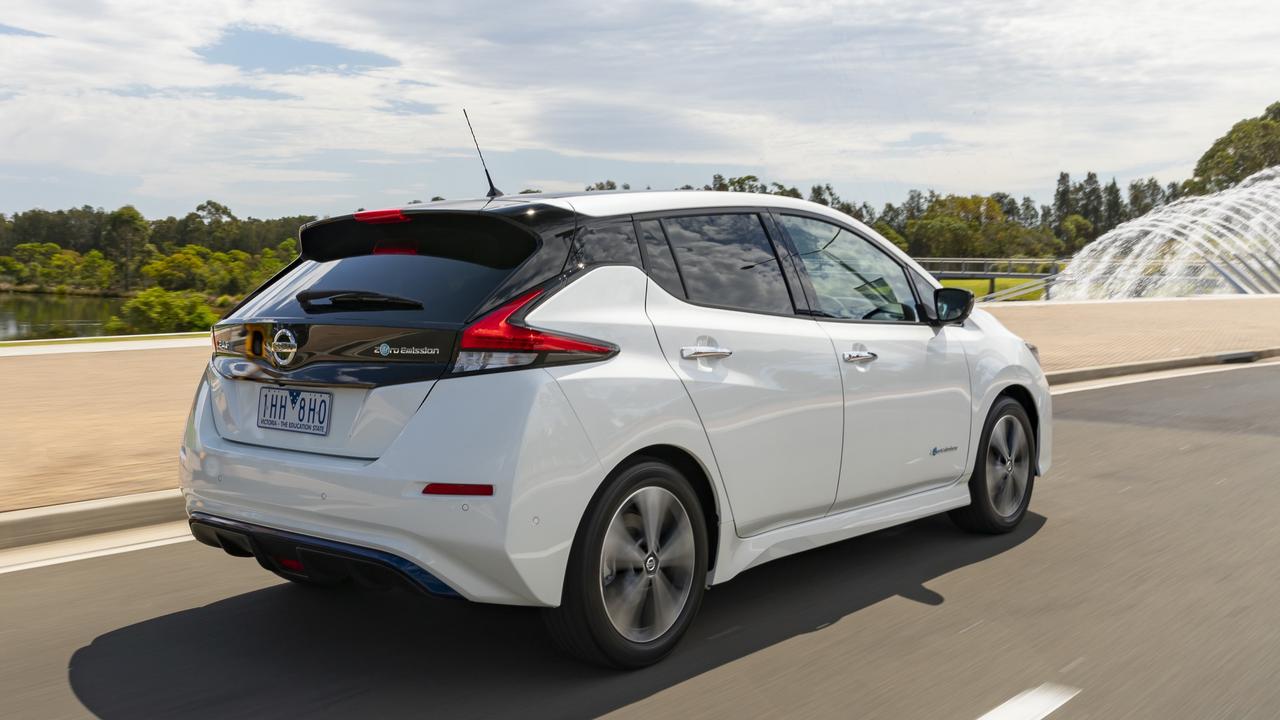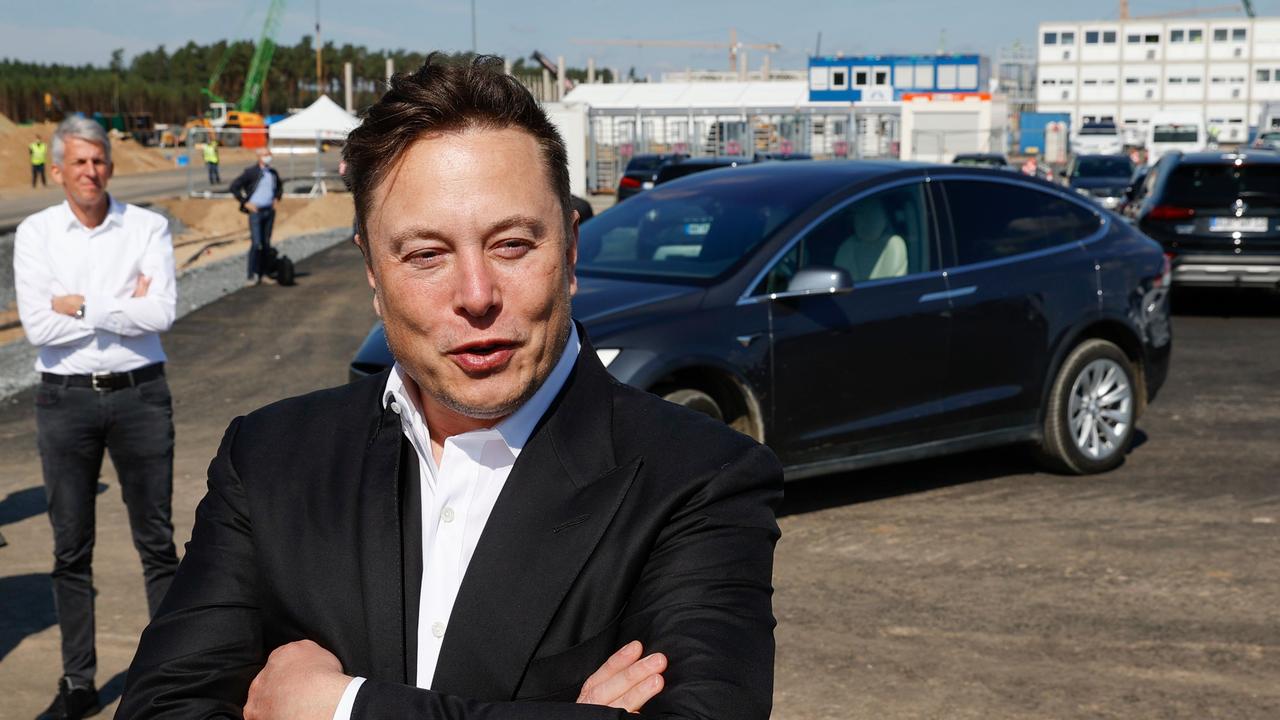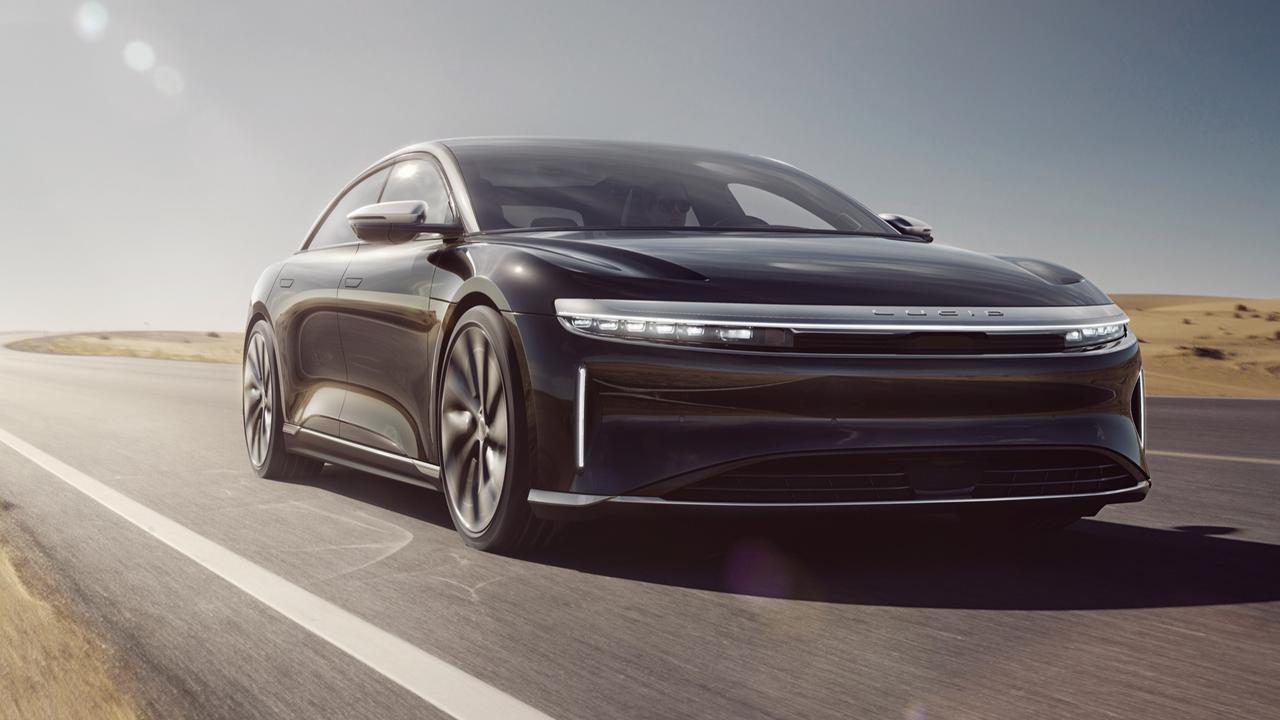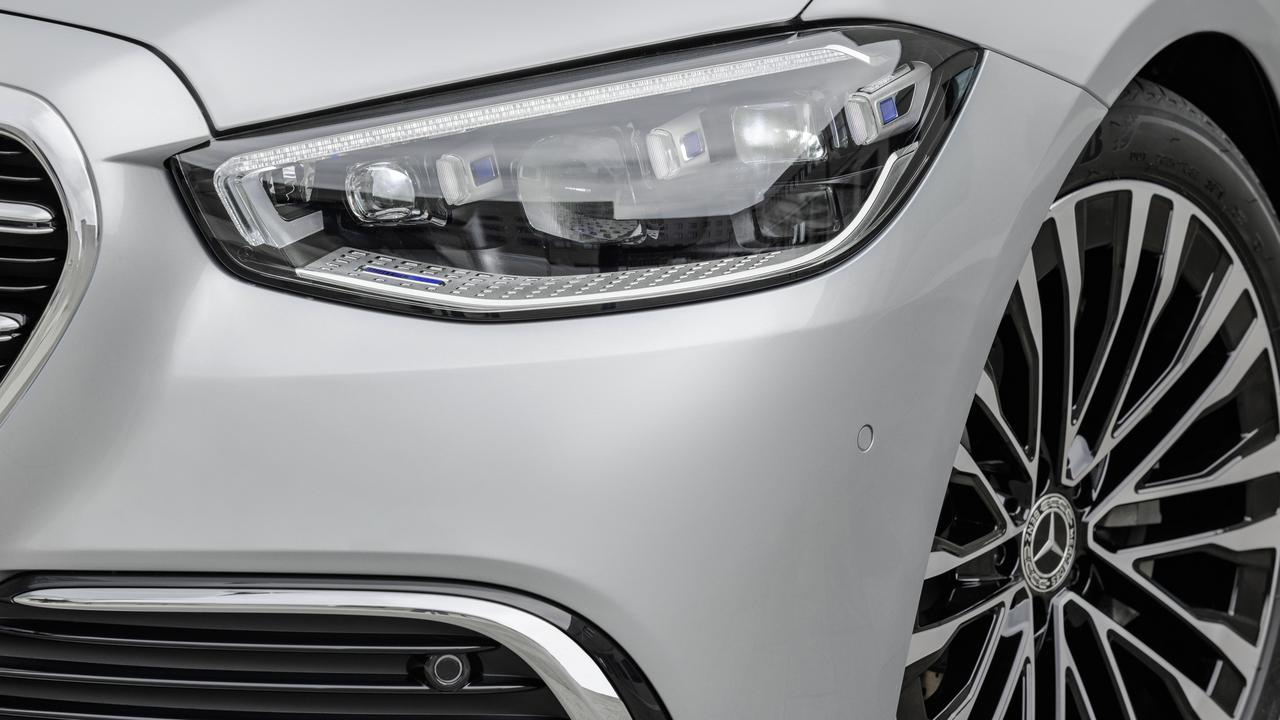Nissan Leaf: world’s biggest selling electric car a step closer to Australia
WORLD’S single best-selling electric car has more driving range but will it be enough?

THE successor to the world’s biggest selling electric car, the new generation Nissan Leaf, has been unveiled in Australia ahead of its arrival in showrooms next year.
Although the price is yet to be announced it’s expected to cost close to $55,000 — about half the price of the cheapest Tesla and twice as much as a similarly-sized petrol-powered car.
The second-generation Leaf has faster acceleration and longer driving range than the previous model, but there is one hurdle Nissan is yet to overcome.
The maximum driving distance on a single charge is 270km, about half the range of a similar-sized petrol-powered car. Most Tesla electric cars can travel more than 300km on a single charge.

Furthermore, overseas tests have found the new Nissan Leaf must undertake a slow charge — that takes up to 24 hours — between each fast charge, which tops up the battery to 80 per cent capacity in 1 hour.
Nissan says “range anxiety” won’t be an issue for most buyers because its research has found the average commute for Australian motorists is 38km a day — and will soon drop to 34km a day.
The range of the new Leaf is a “significant increase on the outgoing model and will meet the needs of Australian customers”, says Nissan Australia boss Stephen Lester.
“Driving a Leaf on one charge during a week will be possible for most owners,” says Lester. “Most owners charge their (electric cars) like they charge their phones, they top up each night.”

Market researcher Alistair Leathwood says 70 per cent of Australian new-car buyers would consider an electric car “if it saves them money” in the long run.
However, the same study found 74 per cent of those surveyed were “concerned about the infrastructure required”.
Tim Washington, the boss of Jet Charge, an electric-car charging firm, says range anxiety is “largely psychological” because “80 to 90 per cent of charging is done at home or work”.
Nissan is adamant Australians will embrace electric cars “and sales will continue to grow”.
It plans to install 89 fast-charging outlets at 89 of its 188-strong dealer network — 62 in metropolitan areas and 27 in regional areas.

The Mitsubishi iMiev was the world’s first showroom-ready electric-powered hatchback, released in July 2009. The first generation Nissan Leaf launched globally in December 2010 and in Australia in June 2012.
Since then, more than 360,000 Nissan Leaf electric cars have been sold globally in 51 countries, including 635 examples in Australia.
Nissan estimates a combined total of 3.6 billion kilometres have been driven.
The original Nissan Leaf had 80kW of power an 280Nm of torque and a driving range of 170km on a single charge.

The new model has more grunt — 110kW of power and 320Nm of torque — and longer range, up to 270km on a single charge.
With a 0 to 100km/h of 7.9 seconds, it accelerates faster than a Toyota Corolla.
There is an Australian connection to every Nissan Leaf sold. Three key components are made as Nissan Australia’s aluminium casting plant, which has been operating since 1982.
About 200 employees work three shifts a day, six days a week to produce 2.6 million parts annually.
Each Leaf part from the Nissan factory in Dandenong, on the southern outskirts of Melbourne, is stamped with a kangaroo symbol to identify Australia as the source.
The new Nissan Leaf is due in Australian showrooms mid-2019.
This reporter is on Twitter: @JoshuaDowling



